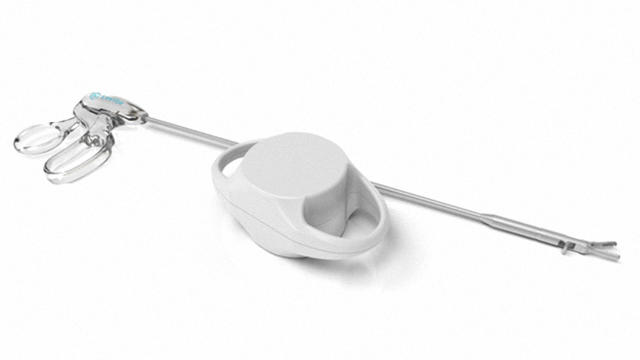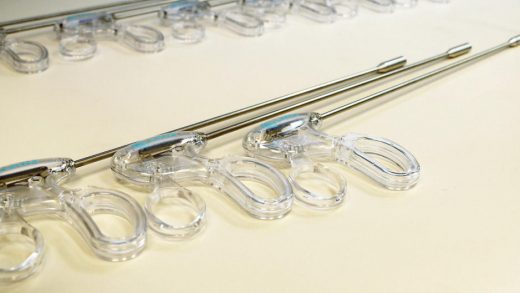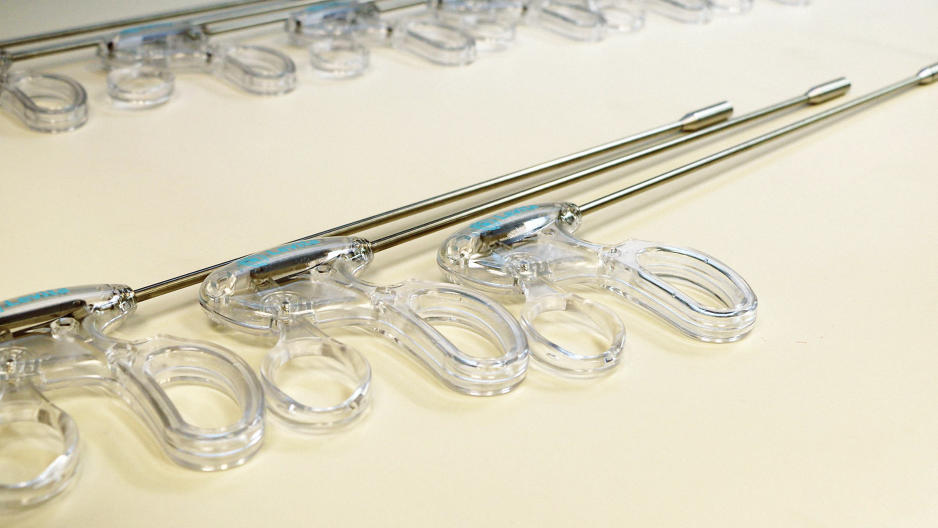This Surgeon Says He Can Revolutionize Operations With Magnets
The holy grail for surgeons is to operate in the most minimally invasive way possible, with the goal of radically cutting down on holes and incision points. New technology is improving precision all the time, but to date, very few surgeons in the world have performed so-called “single port surgery,” which only requires an incision through the belly button. The reason that it’s so challenging is that multiple ports or incision points allow the physician far more freedom of movement inside the body.
“We are always searching for surgery with no scarring or pain,” Homero Rivas, Stanford’s director of innovative surgery, tells Fast Company.
He may now have his wish. A startup called Levita Magnetics is on a mission to make single-port abdominal surgery as easy and affordable as possible—and reduce post-operative scarring and pain in the process. The company, which recently relocated from Chile to Silicon Valley, has received approval from the U.S. Food and Drug Administration for the use of its new magnetic system in common gallbladder surgeries. CEO Alberto Rodriguez-Navarro, who is a surgeon himself, says the FDA granted the company approval in an entirely new category: “magnetic surgery.”
Levita recently published results from a 50-patient clinical trial, which demonstrated that no adverse effects were reported. The company needed to assuage fears that the magnet could be dropped in the wrong place inside the body, or that someone could forgot to put it back into its demagnetized case. (Consider how much metal there is in your typical operating room.)

According to Rodriquez-Navarro, this approach could be the next evolution in surgery. The field has moved from open surgery to laparoscopic, and now to robotics with the advent of technologies like the da Vinci. Levita says its technology can be used in combination with these surgical-assisting robots.
Essentially, the system works when the surgeon uses a grasping device with a small magnet attached through the single port, the belly button. From there, the surgeon releases the magnet onto the gallbladder. The surgeon can then use the external magnet to move the internal one as needed. In the past, surgeons would have needed to move the gallbladder through a hole in the abdominal wall. With Levita, the company says it can now maneuver and lift using magnets without damaging that wall.
“It’s basically a retractor port,” says Evan Goldstein, a surgeon with Bespoke Surgical, who has not used the system. “Instead of me making an incision to retract the gallbladder, they are utilizing a magnet.”
Early Adopters
Already, the magnetic surgical system has been used for gallbladder removals by surgeons at Duke, Stanford, and the Cleveland Clinic. “You can bring an instrument into the abdomen, put a magnet inside, and move it around most of the different areas of abdomen without a fixed point,” says Rivas, who has used the Levita system for gallbladder surgeries. “It’s simple and very innovative.”
Rodriguez-Navarro estimates that about 20 surgeries and counting have been performed so far in the U.S., with far more types of surgeries being done in his native Chile.
In health care, however, the old adage “If you build it, they will come” doesn’t always ring true. In order for Levita to take off, it will need to convince health administrators that it’s worth the cost.
Some say this might be easier than expected. “I think because it’s so simple, it will likely meet the cost constraints that administrators have,” Rivas predicts.
Another challenge is that surgeons aren’t getting reimbursed for using the most expensive and advanced technologies, meaning that only the medical centers with ample funds like Stanford and the Cleveland Clinic can afford to experiment. In the future, the company will need to prove that it can work for more complex operations as well as other common ones, like appendix removals, in order to justify the cost. Another limitation: It doesn’t work as well with obese patients.
“We see the gallbladder surgeries as a stepping stone,” says Rodriguez-Navarro. “Next up we’re thinking about appendectomies, Lap Bands, kidney tumor resections, colectomies, and so many more.”
Fast Company , Read Full Story
(23)














